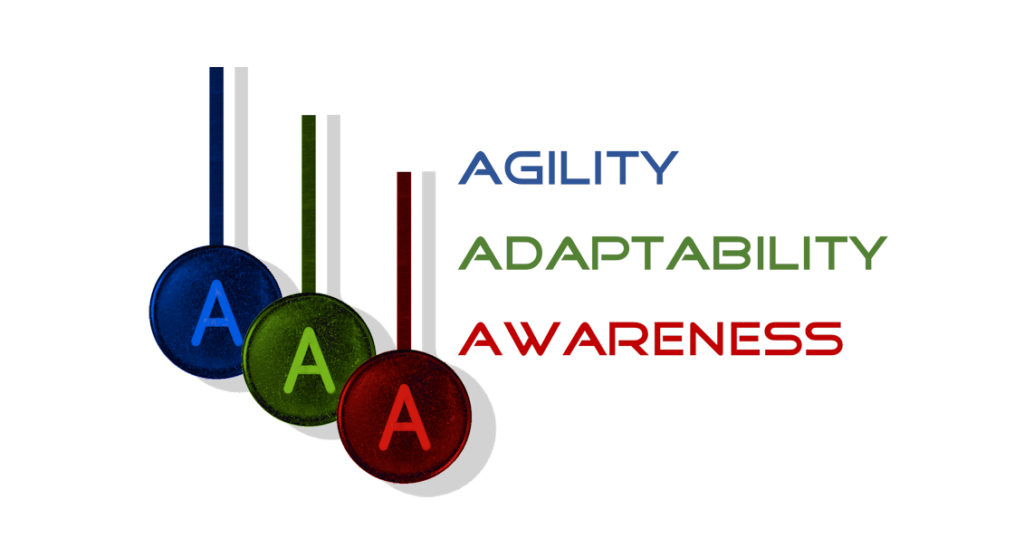I’ve always found it fascinating that the phrase most often associated with Charles Darwin’s theory of evolution is “survival of the fittest.” But what does it mean to be the “fittest”? Conor Cunningham, an Associate Professor of Theology and Philosophy at the University of Nottingham, writes, “Some philosophers and scientists have suggested that the notion of survival of the fittest is an example of circular reasoning — that is, a tautology. … In tautologies, any true statements that follow are a matter of definition. Indeed, describing those that survive as the fittest is similar to stating that those that survive survive.”[1] That begs the question: Why did they survive? Most scholars conclude that surviving species have been those that are either best adjusted to their environment or are best able to adapt to a changing environment. In the business world, we’ve seen the same phenomenon play out. The business environment is constantly changing. Many recent changes are the result of digitalization. Most business leaders recognize that we now live in the digital age. As a result, pundits consistently urge existing businesses to transform into digital enterprises if they want to survive. Drawing from Darwin’s theory, I believe a digital enterprise must embrace three “A’s”. They must be agile, adaptive, and aware.
Embracing digital transformation’s 3 A’s
Digital transformation is not easy. It requires people to adapt to new ways of doing things. Centuries ago, Niccolo Machiavelli, in his classic The Prince, wrote, “There is nothing more difficult to take in hand, more perilous to conduct, or more uncertain in its success, than to take the lead in the introduction of a new order of things, because the innovator has for enemies all those who have done well under the old conditions, and lukewarm defenders in those who may do well under the new.” And, according to Tricia Wang, a self-described Tech Ethnographer & Sociologist, the required transformation is dramatic. She explains, “‘Digital transformation’ at its best [is] a total paradigm shift in the culture and operations — it’s not just about buying the latest digital tool, but about creating a new system, new cadence, new mindset.”[2] Embracing the 3 A’s of digital transformation can help ease the pain.
Agility: Analysts from the Boston Consulting Group (BCG) write, “Agile isn’t the new kid on the block anymore. But for most companies, an agile transformation still feels like a leap of faith. These transformations require companies to redesign organizational structures, alter operating models, build new capabilities, and change long-established ways of working. And the expectations are sky-high — agile promises to double speed to market, boost customer satisfaction and quality, increase efficiency, and reduce costs. Evangelists speak of large organizations unlocking tens to hundreds of millions of dollars in value.”[3]
Matt VanderZwaag, Director of Product Development at US Signal, observes, “Things don’t always go according to plan. … Unfortunately, a change in direction can be a struggle for many companies, as the fear of incurring extra costs, delays, and having to scramble to make the necessary adjustments makes them very resistant to change.”[4] He concludes, “Agility is more than just responding to market and industry changes; it is also about being equipped to handle the unexpected such as COVID-19. Successfully handling change is what solves problems, earns customer loyalty, and opens doors to new opportunities. In a world in which change is more the norm than not, and where we experience drastic events such as cyberattacks, hurricanes, earthquakes, and even pandemics, agility is critical for business success.”
Adaptability: Some people might equate being agile to being adaptable. Agility, however, is defined as being “able to move quickly and easily”; whereas, adaptability is defined as the ability to “make (something) suitable for a new use or purpose.” If Wang is correct (and I believe she is), the digital age requires “a total paradigm shift in [a company’s] culture and operations.” In other words, digital transformation requires making an enterprise suitable for the digital age. I list agility ahead of adaptability because, as Adrian Grigoriu, an Executive Consultant at EA Matters, notes, “Digital rapid evolution requires the enterprise be able to change at a fast pace. Hence, we must render the enterprise agile before embarking in the never-ending increasingly faster digital transformation.”[5]
According to Mark Minevich, a Digital Cognitive Strategist and principal founder of Going Global Ventures, a recent study found, “Only 8% of enterprises have fully modernized. This digital divide will result in those companies who can move quickly and take advantage of new opportunities, leaving behind those who are not.”[6] Minevich believes cognitive technologies (aka artificial intelligence) are the most important technologies for making a company more adaptable. He notes, “Businesses must understand that data and analytics are the key to success in the digital age. The ability to make sense of large data sets and extract valuable insights is a core competency that all businesses must possess. AI can assist in this area by providing the tools and capabilities needed to make better decisions faster.”
Awareness: Being “aware” in the digital age means collecting and analyzing all the data necessary to make better business decisions. Bain analysts, Michael C. Mankins and Lori Sherer, explain, “The best way to understand any company’s operations is to view them as a series of decisions. People in organizations make thousands of decisions every day. The decisions range from big, one-off strategic choices (such as where to locate the next multibillion-dollar plant) to everyday frontline decisions that add up to a lot of value over time (such as whether to suggest another purchase to a customer). … We know from extensive research that decisions matter — a lot. Companies that make better decisions, make them faster and execute them more effectively than rivals nearly always turn in better financial performance. Not surprisingly, companies that employ advanced analytics to improve decision making and execution have the results to show for it.”[7]
That’s why Enterra Solutions® is focusing on the advancement of Autonomous Decision Science™ (ADS®). Enterra ADS® technology is the next wave of analytic innovation beyond data science. Our AI software leverages human-like reasoning to serve as a data scientist and subject matter expert. It analyzes data, understands business processes and logic, and makes decisions as accurately as the best expert. And because cognitive computing solutions, like the Enterra Global Insights and Decision Superiority System™, can handle large numbers of inputs and variables, corporate awareness is improved exponentially.
Concluding Thoughts
Minevich concludes, “Digital transformation has become a business imperative in the wake of the pandemic. Companies that have not modernized their processes and integrated cloud and analytics capabilities are severely disadvantaged. … Digital transformation is a journey, not a destination. It is an ongoing process that requires businesses to evolve and adapt continuously. There is no one-size-fits-all solution. Each company must tailor its approach to fit its unique needs and requirements. The key is to have a clear strategy, the right technology, and the right people. With these foundations in place, businesses can begin to execute their digital transformation plans.” Grigoriu agrees. He predicts, “Even if enterprises postpone transformations, they cannot defer them forever.” Transformation begins by becoming more agile, learning to adapt to changing circumstances, and being constantly aware of how the business environment is changing.
Footnotes
[1] Conor Cunningham, “Survival of the fittest,” Britannica.
[2] Trevor Miles, “Let’s be clear: Digitization is not the same as Digital Transformation,” Kinaxis Blog, 8 December 2017.
[3] Matthew Aliber, Peter Hildebrandt, Mehran Islam, Andrew Jennings, Erik Lenhard, David Ritter, and Filippo Scognamiglio, “Agile Works—but Are You Measuring the Impact?” Boston Consulting Group, 22 April 2019.
[4] Matt VanderZwaag, “Agility: A Scalable Way for Businesses to Survive a Crisis,” Dataversity, 31 August 2020.
[5] Adrian Grigoriu, “The enterprise must be rendered agile before embarking on the Digital Journey,” Toolbox, 15 April 2019.
[6] Mark Minevich, “What Does It Take For Enterprises To Succeed In The Digital Age?” Forbes, 1 June 2022.
[7] Michael C. Mankins and Lori Sherer, “Creating value through advanced analytics,” Bain Brief, 11 February 2015.





